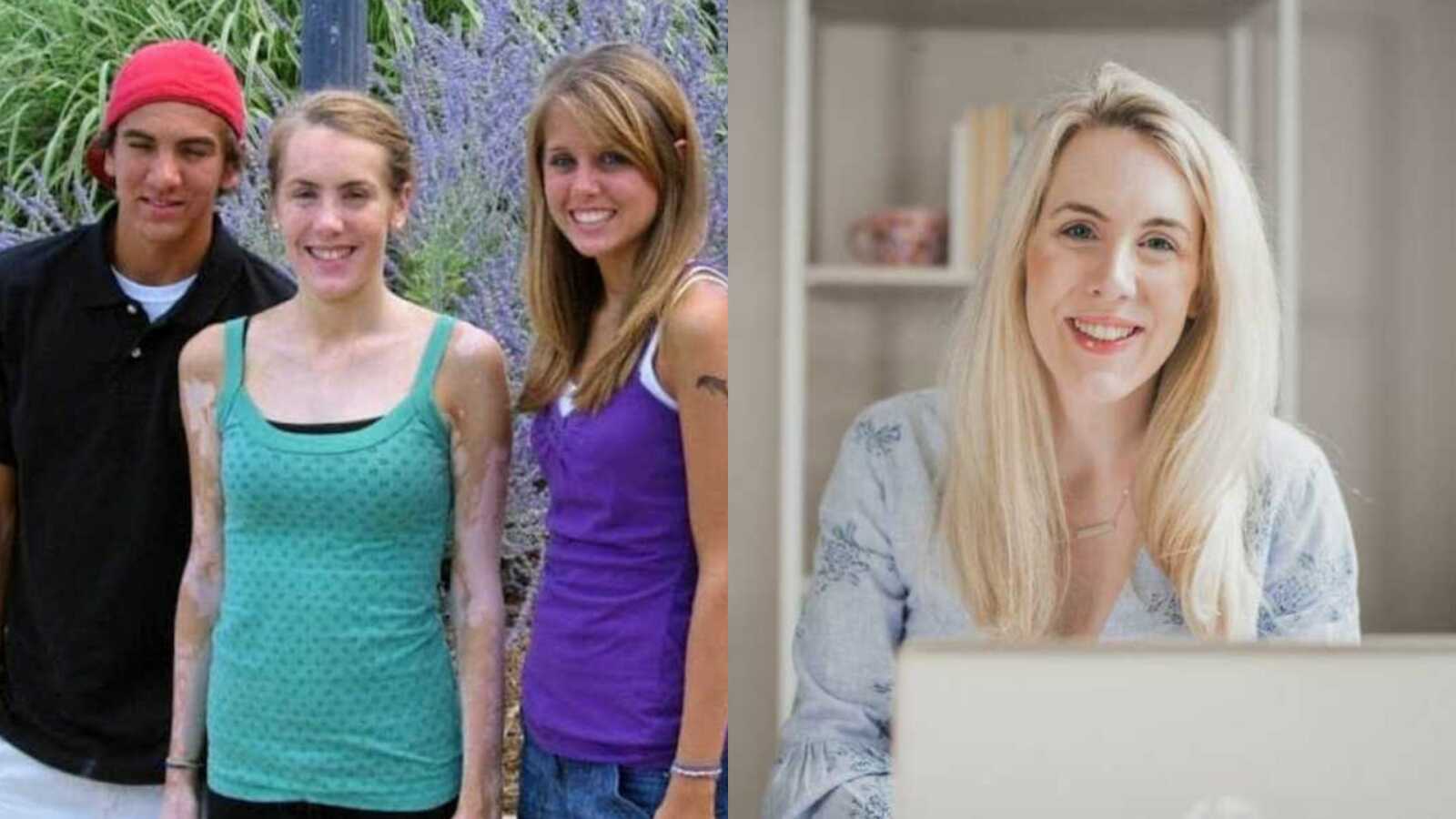Getting Diagnosed With Vitiligo
“I was seven years old when I was diagnosed with vitiligo. The little white spots along my spine and on my knees seemed innocent enough–but the dermatologist had another story. This was vitiligo, an autoimmune disease that causes loss of pigment in the skin and hair, and doesn’t have a cure. It affects approximately 1% of the world’s population, and impacts all genders and races equally.

My mother knew this already though. Her mother, my grandmother, had lived with vitiligo for most of her life. My grandmother rarely talked about it. In her own words, she was ‘too proud for her own good’ to let vitiligo impact her self-esteem. And yet, in a conversation before she passed, she told us she had been ‘an unhappy camper’ after her diagnosis, using long sleeves and stockings to hide the spots.
The dermatologist confirmed my mother’s fears and suggested we begin treating the vitiligo spots with a topical steroid. We agreed and got started, applying small dabs of cream to the spots on my knees daily, limiting exposure to my skin in case it didn’t work.
Having been only seven-years-old, I don’t remember most of this. At least, I don’t remember feeling any specific way about it. The white spots at the time didn’t bother me–and my mom can confirm that fact. As she tells it, one day I told her, ‘Even if I woke up without vitiligo tomorrow, I would still be the same person.’
My confidence was resilient. For the moment.
The spots were spreading aggressively–faster than the topical steroid could work. After appearing along my spine, they spread to my knees and elbows and continued across each limb from there.
Before I started high school, we sat down with the dermatologist again. Treatment options for vitiligo existed at the time, but they were time-consuming and had some high risks associated with side effects for a treatment that ‘might work,’ according to the dermatologist. My parents left the decision to me. I don’t have a vivid memory of talking about this, but I do remember feeling like I didn’t want to proceed with treatment, instead choosing to let the vitiligo run its course.
It was a decision that would change the rest of my life. And, despite the incredible highs and lows that would follow for decades to come after that moment, I never regretted my choice, and I’m thankful for that.
Struggling With Spots
High school was a turning point for my experience with vitiligo. Not only was I getting more and more spots, but I was changing school systems. As a ninth grader, I was suddenly the ‘new kid,’ and not only that, but a spotted new kid too.
Walking into high school that first day, I was consumed with fears over what everyone would think about me and my skin. I felt like I looked ‘different’ and ‘weird.’ And I assumed my peers would think the same. As a result, I was shy and closed off for most of my four years of high school. After-school sports–cross country and tennis–were my opportunities to make friends and focus my energy on something I was good at instead of stressing about what I looked like.

Outwardly, I was quiet and awkward and rarely talked about my skin. I used the little bit of confidence I had as a shield, writing ‘see spot run’ on my cross country t-shirt, and letting friends outline my spots with gel pens. It wasn’t that I wasn’t happy–I did have good days and good moments. But that wasn’t the full story. Because on the inside, I was living a mental nightmare.
For most of high school, I was consumed with spiraling, negative thoughts about my skin. I wished every night I would wake up in the morning without vitiligo. I would stare at myself in the mirror and imagine how I might look if I was ‘normal.’ I wondered, ‘Why me?’ when my three siblings had beautiful, un-spotted skin. I had obsessive skin envy, constantly comparing my skin to others. As I got older and my vitiligo progressed, staring eyes from strangers, however innocent, would only fuel these compulsive and self-destructive thoughts.

At its worst, I believed I didn’t deserve friends because of the way I looked. I hated my skin, and myself. Why would anyone else see me differently? I was desperate for a way out, for a chance to be myself again.
Turning To Tanner To Hide My Skin
In my early twenties, I had lost almost 100% of my skin’s pigment to vitiligo. The only ‘spots’ left were small patches of my natural skin color. My skin was nearly one color again, which was easier to live with than being covered in spots. But I wasn’t mentally ready to accept the change. In my mind, my skin was tan–not ghostly white. So, I turned to tanner to ‘get back’ the skin I felt like I had lost.
At first, I would go to spray tanning booths twice a week. The entire process would take a full evening. I would start by scrubbing my skin in the shower–nearly raw–to exfoliate the old tanner. Then I would go to the spray tan booth, wait my turn, apply the fake tan, and spend the evening ‘drying’ my skin in my apartment. I would put special, stain appropriate sheets on my bed that night to avoid ruining my normal sheets with any tanning residue.
In the morning, I would jump out of bed and anxiously check the results. Good? I was on the moon and felt like a beauty queen. I was finally me–the me I thought I was supposed to be. For the first time in my life–that I could remember–I could walk down the street without being stared at. I felt like I was who I should have been all along. I was overjoyed.
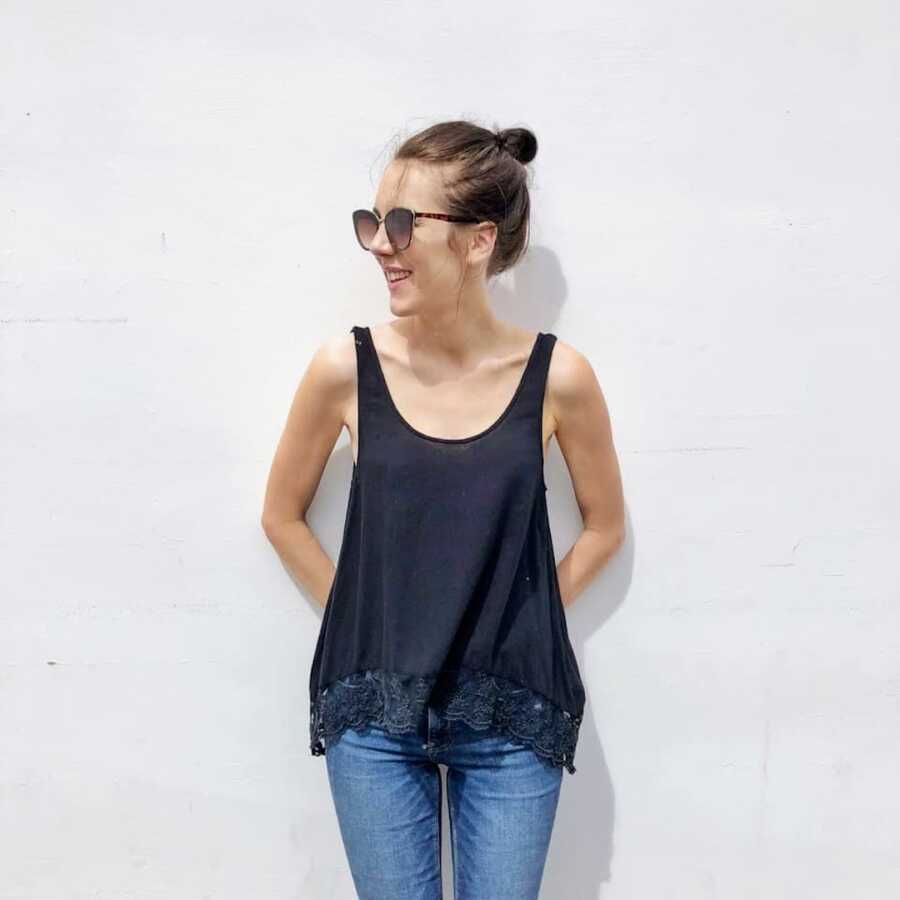
But every now and then, the tan didn’t turn out right, streaking or resulting in some discoloration. Anxiety-ridden meltdowns would result. Tanner had become my security blanket. Without it, I was so scared the world might see the girl I was trying so desperately to hide.
After a while, I realized this relationship with tanner was toxic for my mental and emotional health. I started slowly stepping away from tanner, making small changes to my daily habits. First, I switched from spray tans to a self-tanner that required less time, money, and mental energy spent on applications. Then, I started lightening the color, slowing letting go of the ‘old me’ I thought I should be and taking baby steps toward what I knew my skin must look like now.
Embracing My Vitiligo
After seven years of covering my skin head to toe in tanner, I knew I had lost 100% of my skin’s pigment to vitiligo. I was finally curious to see what I looked like–and tired of hiding. I signed up for an in-person body confidence workshop in NYC that included a photo shoot. I didn’t feel like I could show up to the shoot hiding my skin, and it felt as good of a time as any to give this a try. So I threw away my tanner bottle.
Over the next few weeks, I watched my skin go from tan to pale and even paler. I was shocked at my new ghostly white skin. While I waited for the photo shoot, I still had to go to work in an office where my coworkers were seeing this change. I only got positive encouragement and support from these coworkers, but I remember vividly sitting on a Zoom call and feeling like I was glowing on camera because of how white my skin was compared to everyone else on the call.
Later, I went to the body confidence workshop in NYC and sat on the floor with about a dozen other women, journaling some of the thought patterns and assumptions tied to my skin. Over the course of that day, I realized I had mentally and emotionally been holding myself back from loving my skin because I felt like I wasn’t the person I was supposed to be. Yet I could choose to love my skin. It was that simple. It was my choice.

That experience struck a chord for me. I hadn’t decided what to do about wearing tanner after the workshop. But days turned into weeks, which turned into months, and I never put it back on. About a year later, I decided to start letting the white pigment in my hair–which I had been covering with hair dye–start coming through. That decision started a year long–and still ongoing–journey to transition my hair to fully white as the vitiligo took over.
Looking back, these decisions to embrace my skin might seem easy. But they weren’t. They were years in the making, fueled by tiny actions that ultimately led to big changes. And I wasn’t doing it alone–I had found a community of women with vitiligo who were there to support and love me, and that had made all the difference.
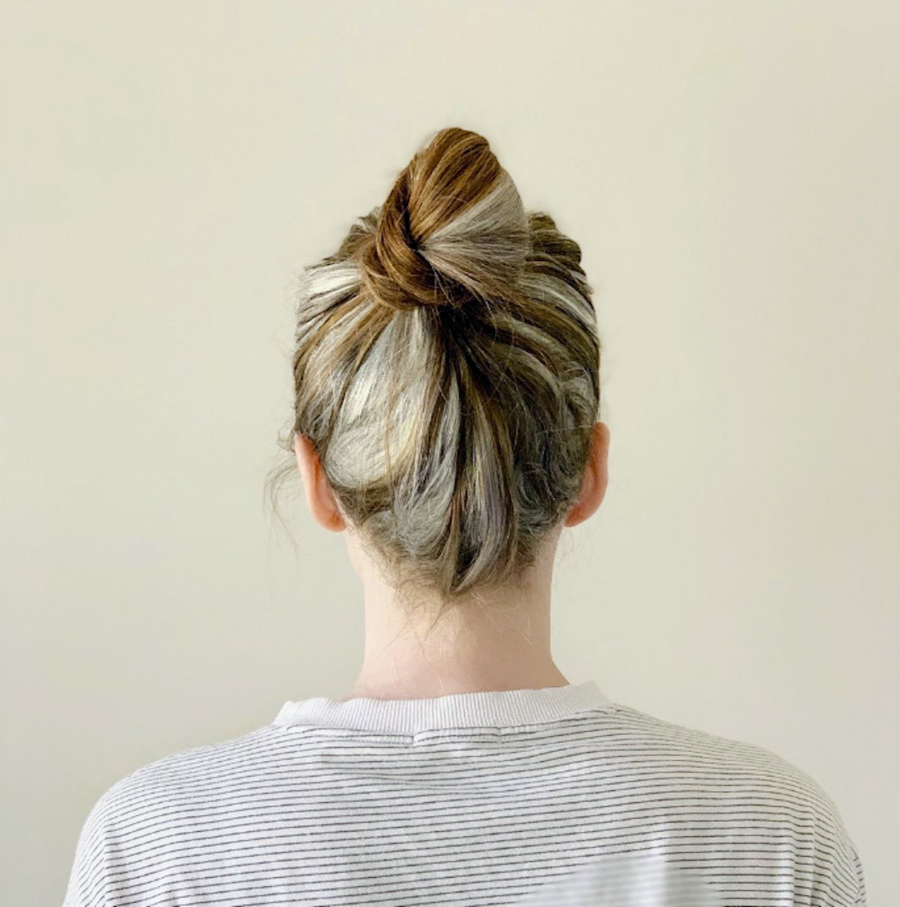
Launching A Community For Vitiligo
Shortly after college, I had a life-altering moment. It was morning, and I was frantically trying to get dressed, running between my dresser and my mirror, getting increasingly aggravated at every outfit I put on. After a few minutes, I found myself standing in front of the mirror, and I realized the issue wasn’t my outfit, it was my skin. And that was something I could not fix. It was not going to change. And it might not ever change, for the rest of my life.
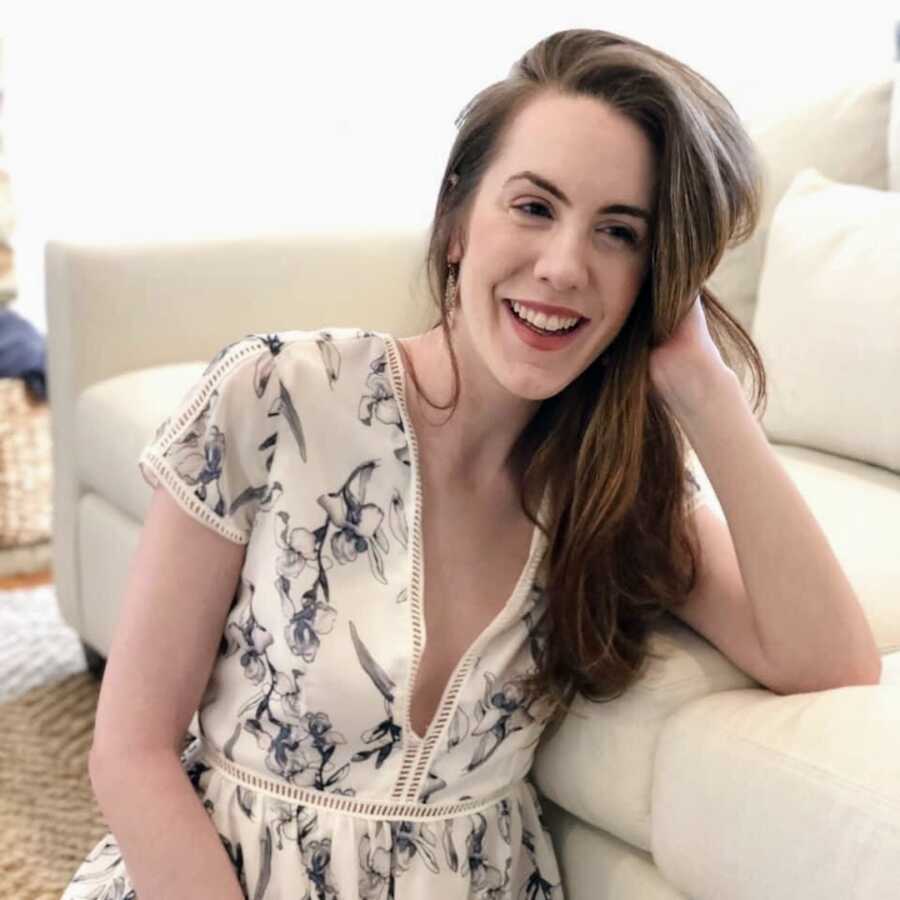
The finality of that realization–and the idea I might live with this for the rest of my life–changed my way of thinking. In the moment, I crumbled into a crying heap on the floor and sobbed as the feeling of complete lack of control over my own body swept over me. But after a few hours, I picked myself up, wiped my tears, and realized something had to change. That change was that I stopped waiting. I stopped waiting for life to magically get better and set out to find a change. It turns out I was going to make one instead.
I started researching blogs and websites about vitiligo to find resources and support. Instead, I soon realized something was missing. Most of the websites I found were focused entirely on treatments, with a strong clinical tone and focus. But no one was talking about the rest of vitiligo–what it was actually like to live with the condition. No one was talking about being stared at in the grocery store, covering spots with makeup, or being nervous to shake a stranger’s hand because of how they might react to your skin. Those parts of vitiligo–the real, raw, everyday moments–were important. And I felt compelled to find a way to make space for them.
Shortly after, I launched Living Dappled, a blog and community for women with vitiligo focused on everyday life with the condition. I interviewed women with the condition, sharing their stories and publishing my own experiences with vitiligo. I talked to leading dermatologists and helped break down science behind vitiligo so it was easy to understand. I pulled together resources and started finding inspiring stories and self-help tips from real people living with vitiligo.
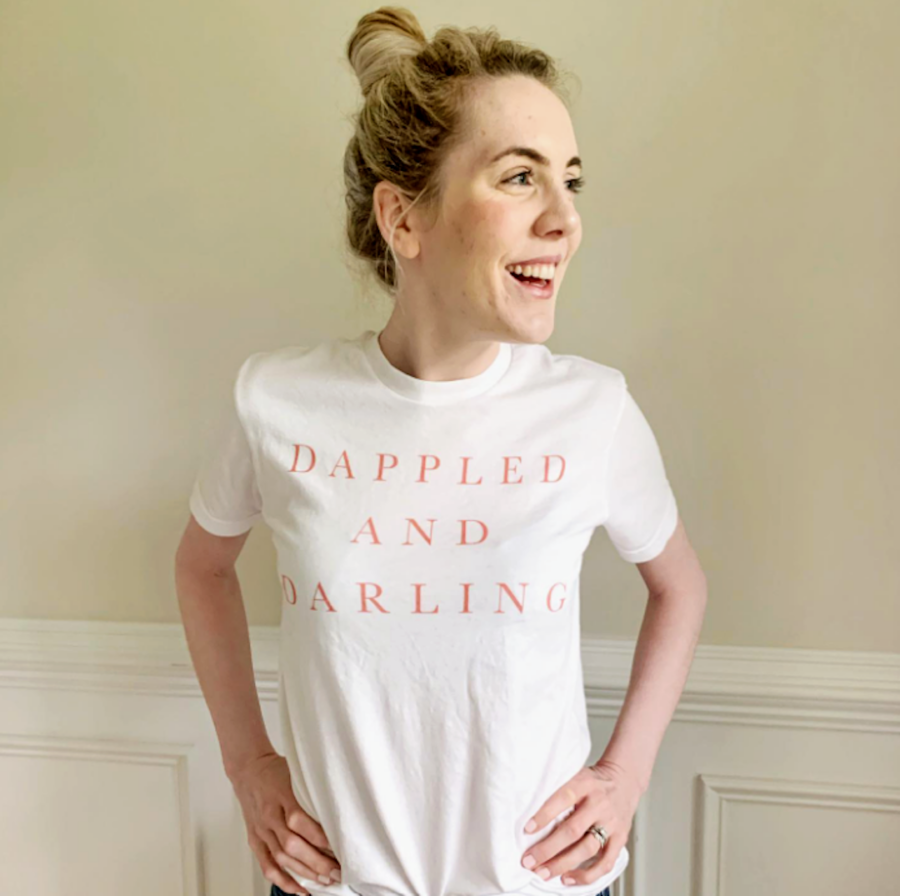
Within months of launching, messages started pouring in from women with vitiligo who lived all over the world. My inbox filled with stories from women who had felt alone, who couldn’t leave the house in anything other than sweatpants, and who just wanted to know they were normal too. Readers would tell me they had read the entire blog from start to finish, each and every post, and couldn’t wait for the next story. More than one of those emails left tears strolling down my face. I was humbled to know I was literally changing the lives of others.
And despite how much Living Dappled was helping these women, they would end up helping me even more. Because it was the conversations and time spent with these women that would ultimately help me find the confidence to love my own skin.
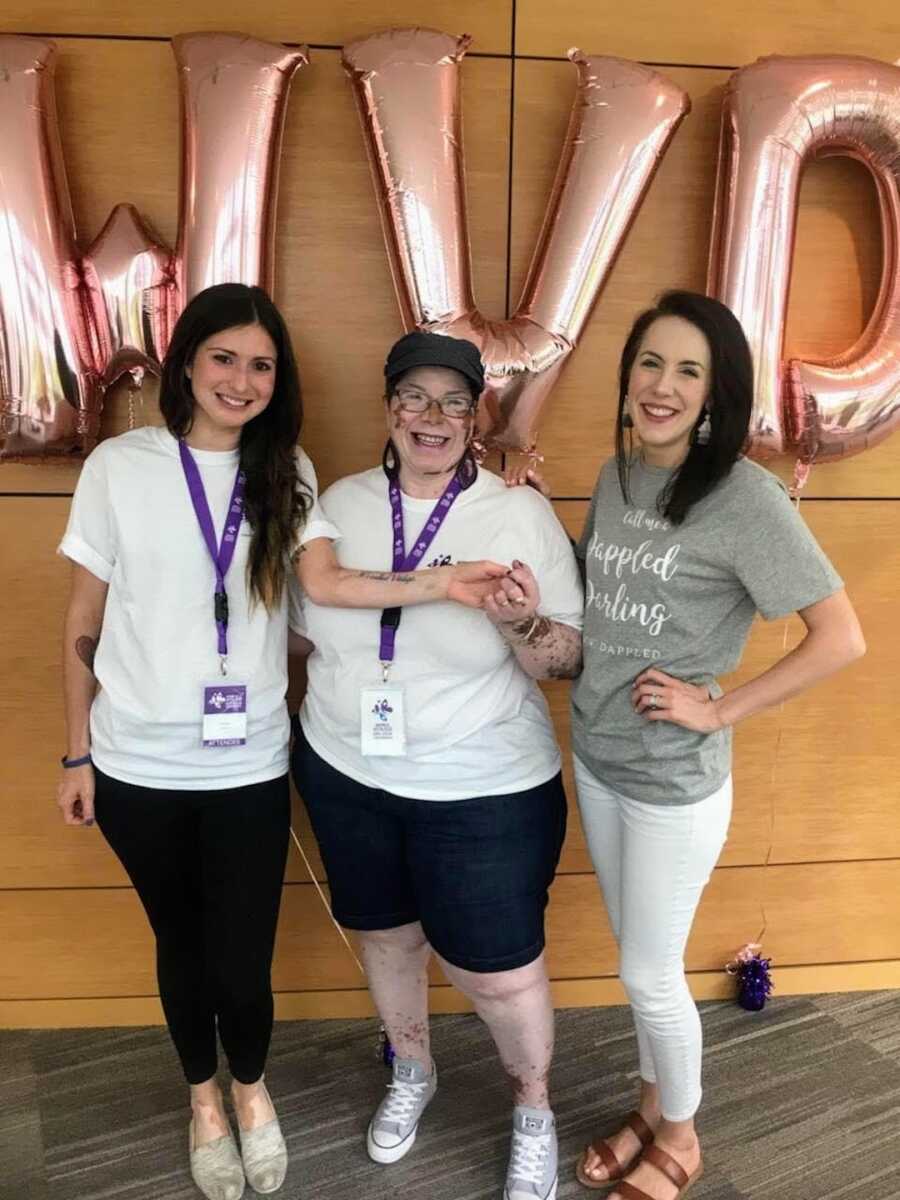
The Power Of Knowing You Aren’t Alone
There’s power in knowing you aren’t alone. I spent most of my life with vitiligo feeling like I was alone. My family and friends couldn’t understand what I was going through, partially because I didn’t share it, but also because to them, it was just skin. The well meaning comments about my skin like, ‘You still look beautiful,’ or ‘I barely notice’ were intended to help, but often left me feeling even more isolated. Because to me, my skin was everything. I couldn’t not notice it. It was the lens through which I saw my life.
I started connecting with other women with vitiligo first through interviews for Living Dappled. We would talk on the phone and share our stories about life with vitiligo, and I was always struck by how similar our stories were, despite coming from entirely different walks of life. Then I started seeing these women in-person at photo shoots for the blog. And later, I would get to know several of them and consider them close friends.
Without a doubt, it was the connections with these women with vitiligo that allowed me to eventually embrace the skin I’m in. Knowing I wasn’t alone–that someone else ‘got me’ and was going through this too–gave me the confidence I needed to keep putting one foot in front of another.
When I first launched Living Dappled, another girl with vitiligo DM’ed me on Instagram and asked if I would consider taking my tanner off. I replied, ‘Absolutely not, the thought alone terrifies me and sends me into a panic attack. But maybe one day.’
I’m so glad that day came. And I’m so thankful for those with vitiligo everywhere who have shared their stories to help lift me up, so I can continue to do the same for them.”
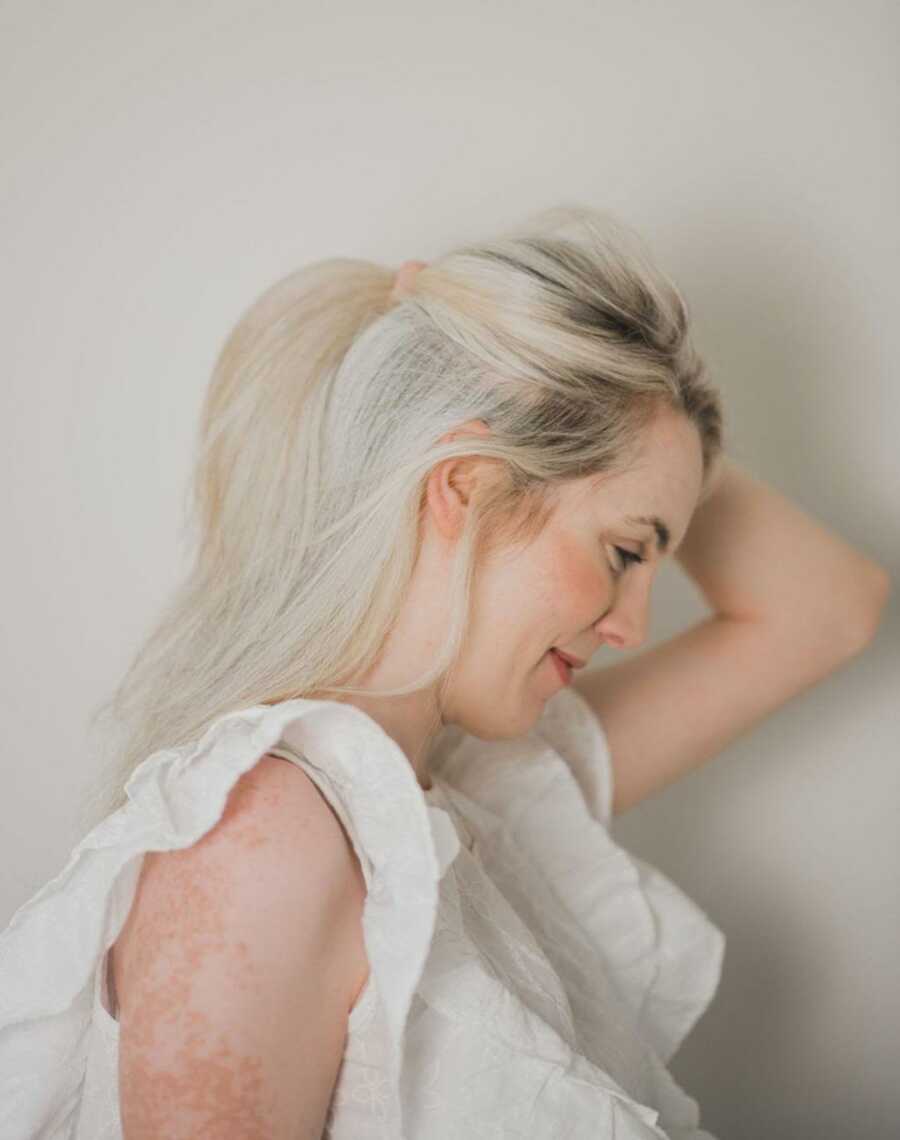
This story was submitted to Love What Matters by Erika Page of Richmond, Virginia. You can follow her journey on Instagram and her website. Submit your own story here, and be sure to subscribe to our free email newsletter for our best stories, and YouTube for our best videos.
Read more inspiring stories like this:
Spread strength and beauty for others. SHARE this story on Facebook with family and friends.

